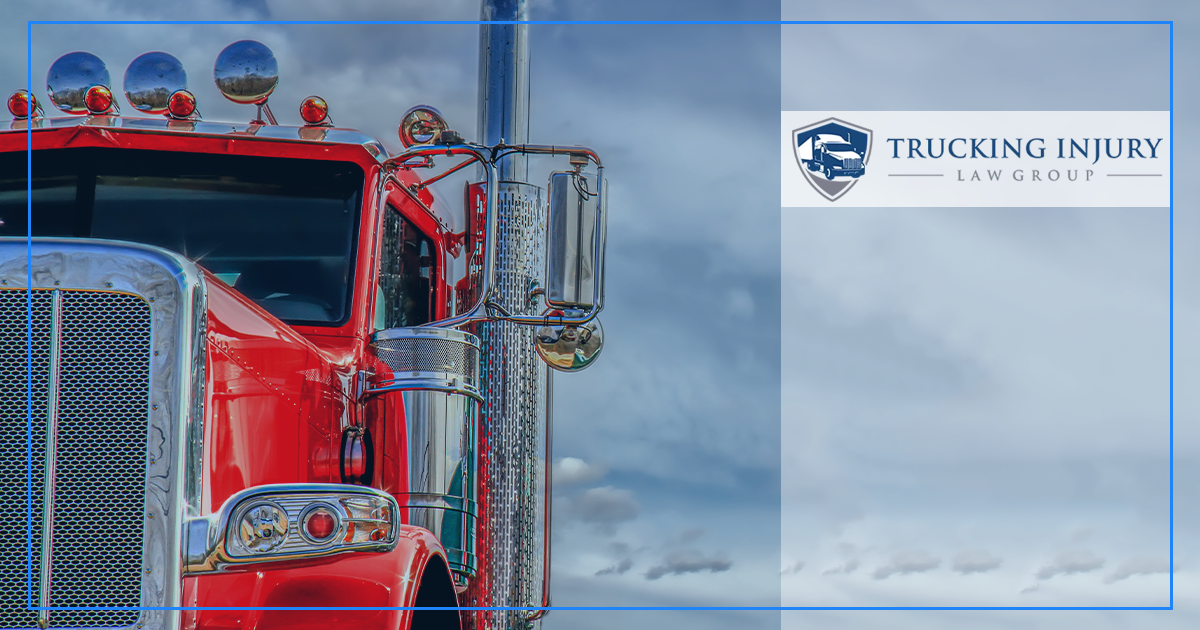How the Death of a Movie Star Changed Tractor-Trailer Safety
Actress Jayne Mansfield was at the height of her Hollywood career in the 1950s and early 1960s.
However, her success came to an abrupt end in late June of 1967 when she was traveling between appearances, and the sedan she was in collided with the rear of a tractor-trailer. That collision resulted in Manfield’s immediate death.
However tragic the circumstances under which she died, the premature loss of such a well-known figure in Hollywood did spark change. Below, we’ll go into detail about how the death of a movie star changed tractor-trailer safety laws for the better.
The Safety Recommendation That Arose Out of the Actress’ Sudden Passing
It wasn’t long after Mansfield lost her life that the National Highway Traffic Safety Administration (NHTSA) recommended the installation of an underride guard on all tractor-trailers in our country. The trucking industry wasn’t on board with this recommendation, though.
What Is an Underride Guard?
Sometimes referred to as an Interstate Commerce Commission (ICC) bumper or as a “Mansfield bar,” an underride guard is a strong steel tube or bar that hangs down from the bed of the trailer of an 18-wheeler. They typically cover up to 18-28 inches from the edge of the truck and are generally bolted or welded onto the actual trailer bed.
There are also side underride guards, which are sometimes referred to as “side skirts.” While some are made of galvanized steel, much like the Mansfield bars, others are formulated from plastic or aluminum.
They aim to prevent not only small automobiles but also pedestrians, motorbike riders, and bicyclists from becoming trapped within the several-foot gap between 18-wheelers’ second and third axles.
Causes of Underride Accidents
As you may have been able to glean from the description of underride crashes above, they often involve a vehicle sliding under a tractor’s trailer. It generally takes one of the following events occurring for these crashes to occur:
- An 18-wheeler stopping abruptly, causing a car to slide under it
- A passenger car operator traveling at too fast of a speed that they’re unable to reach a full stop and avoid a crash if the truck ahead of them suddenly brakes
- A truck or sedan’s driver running a light or stop sign, leading to a T-bone crash in which the lower-lying vehicle becomes stuck under the undercarriage of the trailer
- A motorist driving moving at too high of a speed that they’re unable to acknowledge a hazard entering their path (a truck), brake in response to seeing it, and adequately slow their vehicle to avoid a crash in time
As for the latter point, reaching a full stop may take longer if a motorist is operating their vehicle in inclement weather (like rain, snow, or ice) or at a greater rate of speed.
How Do Mansfield Bars Prevent Crashes?
Big rigs’ rear wheels are inset approximately 8-10 feet under the tail end of the trailer. Your average sedan measures approximately 12-18 feet in length.
Thus, a rear-end collision between a passenger car and a large truck that doesn’t have this guard installed on it can lead to the former becoming nearly wholly engulfed by that cargo hauler.
Underride guards are effective in preventing crashes, according to the NHTSA. A vehicle has a strong potential of colliding with the rear guard and bouncing off it if one is installed. The same goes for side underride protection devices.
Injuries That Stem from Underride Crashes and Mansfield’s Fate
In Mansfield’s case, she was riding alongside her vehicle’s driver and a male companion in the front seat of a Buick with her three young children in the rear when the crash occurred at what investigators determined was between 60 to 80 MPH.
The collision immediately claimed the lives of both adults traveling in the front seat, but the kids in the rear survived with only minor injuries.
Fatal injuries are, unfortunately, an all-too-common outcome of these accidents. Why is that the case?
While Mansfield’s crash appears to have involved two moving vehicles, the tractor-trailer and the vehicle she was traveling in, these collisions often occur when a passenger car strikes the rear portion of a static (unmoving) truck particularly forcefully. The impact with which the two vehicles make contact almost always crushes the front portion of the vehicle (its hood) when that impact occurs. However, when these guards aren’t installed, it’s quite common for a sedan’s roof to become sheared off, which generally results in the decapitation of the car’s occupants.
In the case of Mansfield, early reports based on initial reviews of crash scene photos were that she and her car’s fellow passengers were themselves decapitated in their crash.
However, the medical examiner who later performed an autopsy on the actress ruled that her death resulted from a fractured skull and significant brain trauma.
Thus, even when decapitating injuries don’t occur, there are plenty of other ones that those lucky enough to survive such crashes end up receiving, including:
- Blunt-force trauma injuries to the head, which may result in a fractured skull, hematomas, and traumatic brain injuries (TBIs)
- Broken necks or backs, sometimes resulting in spinal cord injuries and residual paralysis
- Internal organ damage
- Compression injuries causing circulation issues and tissue death, thus necessitating amputations of limbs
- Facial fractures or lacerations leading to scarring and disfigurement
- Broken collar bones or shoulders, leading to a range of motion concerns
Injuries tend to be even more catastrophic when the smaller automobile becomes trapped beneath the trailer, and the trucker doesn’t immediately realize it’s dislodged underneath. It may be dragged for some distance as a result.
How Did Jayne Mansfield’s Death Change Truck Safety?
If you review the history of efforts aimed at reducing underride wrecks in our country, it’s clear that government regulators and those in the trucking industry understand the value of trucks having guards installed on them.
However, looking at the timeline of efforts made by advocacy groups to make them mandatory reveals that their attempts to do so have been an uphill battle. Per the NHTSA resource shared above, the federal agency did issue a mandate requiring all newly manufactured tractor-trailers from 1998 onward to come equipped with underride guards, but this occurred 30+ years after Mansfield died.
Thus, while Mansfield’s death shined light on how these crashes occur, how deadly they can be, and how a relatively inexpensive and quick-to-install guard could prevent them, they still occur today in large part due to there not being a meeting of the minds about how critically necessary they are.
If you’ve had the misfortune of becoming involved in an underride accident or you’ve lost a close family member to one, reach out to our team at Trucking Injury Law Group.
We offer free consultations where you can discuss your legal options with an attorney who specializes in handling wreck cases involving negligent tractor-trailer operators and trucking companies.






